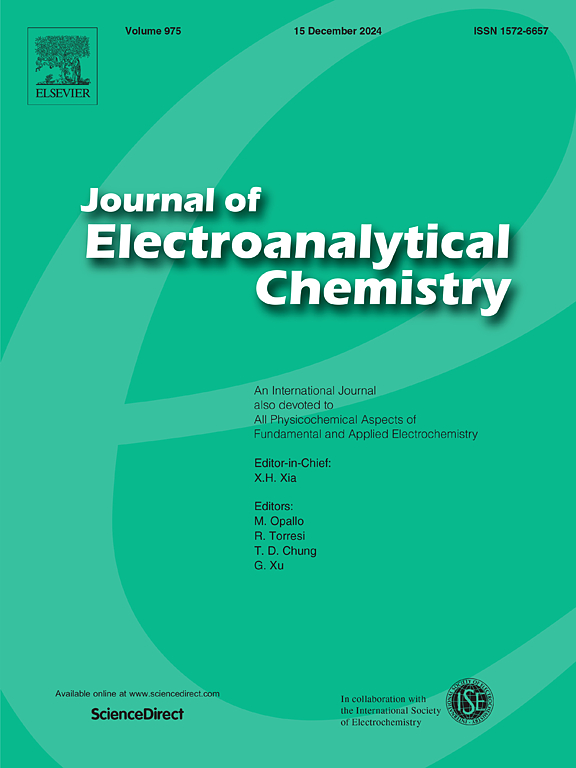可持续自掺杂工程:将制浆黑液转化为先进超级电容器电极的分层掺硫多孔碳结构
IF 4.1
3区 化学
Q1 CHEMISTRY, ANALYTICAL
引用次数: 0
摘要
电极材料的孔结构和比表面积是影响超级电容器性能的关键因素。以硫酸盐制浆副产物碱木质素(AL)为原料,经预氧化和koh活化炭化,合成了高比表面积的硫掺杂碱木质素基多孔炭(KALC)。预氧化步骤提高了炭化效率和结构稳定性。制备的碱木质素基碳(ALC)以微孔结构为主,比表面积为1887.4 m2/g,孔体积为0.792 cm3/g,明显优于直接炭化的碱木质素基碳(ALC)。电化学测试表明,KALC在0.8 a /g下的比电容达到396 F/g,在对称超级电容器中5000次循环保持95%的电容。这项工作提出了一种简单和可持续的策略,将工业木质素转化为高性能杂原子掺杂碳材料用于储能。本文章由计算机程序翻译,如有差异,请以英文原文为准。
Sustainable self-doping engineering: Transforming pulping black liquor into hierarchical sulfur-doped porous carbon architectures for advanced supercapacitor electrodes
The pore structure and specific surface area of electrode materials are critical to supercapacitor performance. Herein, sulfur-doped KOH-activated alkali lignin-based porous carbon (KALC) with a high specific surface area is synthesized from alkali lignin (AL), a byproduct of sulfate pulping, via pre-oxidation and KOH-activated carbonization. The pre-oxidation step enhances the carbonization efficiency and structural stability. The resulting KALC exhibits a predominantly microporous structure with a specific surface area of 1887.4 m2/g and a pore volume of 0.792 cm3/g, significantly surpassing those of directly carbonized alkali lignin-based carbon (ALC). Electrochemical tests demonstrate that KALC achieves a specific capacitance of 396 F/g at 0.8 A/g and retains 95 % capacitance over 5000 cycles in a symmetric supercapacitor. This work presents a simple and sustainable strategy for converting industrial lignin into high-performance heteroatom-doped carbon materials for energy storage.
求助全文
通过发布文献求助,成功后即可免费获取论文全文。
去求助
来源期刊
CiteScore
7.80
自引率
6.70%
发文量
912
审稿时长
2.4 months
期刊介绍:
The Journal of Electroanalytical Chemistry is the foremost international journal devoted to the interdisciplinary subject of electrochemistry in all its aspects, theoretical as well as applied.
Electrochemistry is a wide ranging area that is in a state of continuous evolution. Rather than compiling a long list of topics covered by the Journal, the editors would like to draw particular attention to the key issues of novelty, topicality and quality. Papers should present new and interesting electrochemical science in a way that is accessible to the reader. The presentation and discussion should be at a level that is consistent with the international status of the Journal. Reports describing the application of well-established techniques to problems that are essentially technical will not be accepted. Similarly, papers that report observations but fail to provide adequate interpretation will be rejected by the Editors. Papers dealing with technical electrochemistry should be submitted to other specialist journals unless the authors can show that their work provides substantially new insights into electrochemical processes.

 求助内容:
求助内容: 应助结果提醒方式:
应助结果提醒方式:


